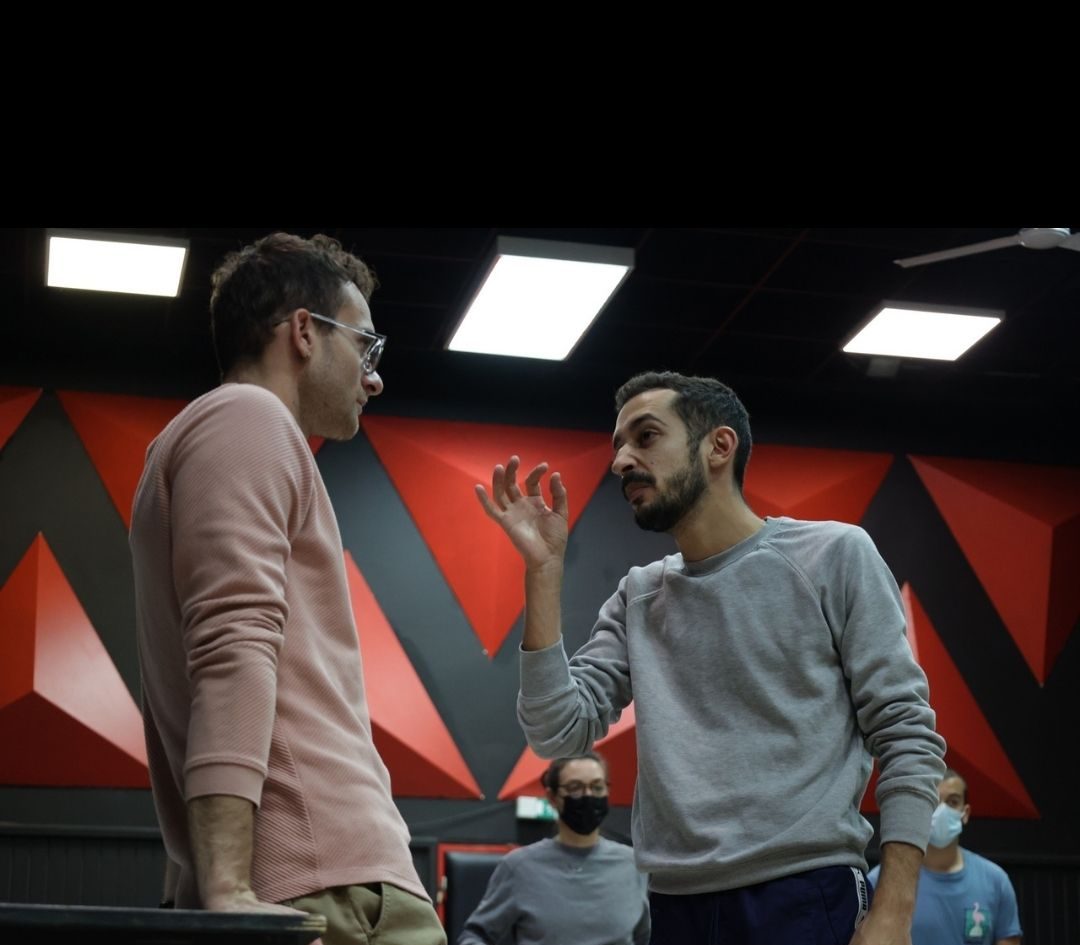The Magic Flute is a true opera fairy tale for families, which is also recommended as the first opera that every child can watch. And who, alongside Mozart’s music, danced the whole fairy tale on the Rijeka stage and devised its stage movement? The choreographic duo of The Magic Flute are members of the ballet ensemble who complement each other creatively, Spaniard Carlos Huerta Pardo, a soloist in the Ballet, and principal dancer of the Ballet, Italian Michele Pastorini. We asked them about their work on The Magic Flute.
When did you first become acquainted with Mozart’s Magic Flute? How do you like the story? What is so magical about this opera for you?
Carlos: I couldn’t honestly say when I first encountered Mozart’s Magic Flute. What I can say is that from a very young age, I have known the most famous aria of the opera starring the Queen of the night in the second act.
The story of this Opera seems really entertaining to me. It represents strength and youth from a very friendly and joyful point of view, and I think that’s what makes this Opera magical.
Michele: I honestly can’t say when exactly I heard about The Magic Flute for the first time. I had a very shallow idea about the story; once I started to read about it (as I knew I would soon be part of it), I got really excited. This opera is magical, it is (in my humble opinion) the closest “opera” to a fairy tale, as such very much for kids, which is the real magic for me: the hope that kids will fall in love with these fantastic artists on stage, and so with the theatre itself.
How did you make this opera move and dance?
Carlos: I have to say that, like everything, there is always a beginning, and ours was quite challenging. My colleague Michelle Pastorini and I were faced with an Opera that was performed for the first time in this National Theater, and a quite abundant and varied cast of artists, since we have had the opportunity to work with students, actors and singers.
The main inspiration for this entire process has been the same story that is told during the Opera but, above all, the same inspiration has come from the cast itself, from their actions and movements that we have shaped. Working with all of them and exchanging experiences together has been what has helped us to make this Opera move.
Michele: I have the feeling that the opera was moving me. We had many roles to handle – the actors on stage, the students who were our “dance ensemble,” so I simply ended up following the magic. All the artists involved are so inspiring that honestly, in terms of creation, the effort was zero.
How is Mozart’s music for dancing?
Carlos: Mozart’s music is full of light and elegance, and at the same time, darkness and passion, therefore, it is very pleasant to dance it and feel how the melodies that pass during the Opera enter your body by themselves, making you move without hardly thinking about it. The beauty and the magic of the music touches you inside, which is why, on most occasions, it becomes very easy to dance and choreograph it.
Michele: Mozart is one of the greatest composers of all time, the real definition of “evergreen”, so dancing his compositions or creating based on them isn’t easy. There is a lot of respect for this treasure, so of course the risk of doing something wrong is very high, yet so beautiful that I can’t help going for it any time I get the chance to.
How did you work? Did you share assignments, work together all the time or did one have singers and the other actors, or..? 🙂
Carlos: Actually, the main idea was that each of us would dedicate himself to different parts, but from the beginning, my colleague Michele and I realized that, by working together, our ideas achieved better quality results without wasting time, so we decided to create the Opera together, always in line with Renata’s ideas and directions.
Some days, in some rehearsals, we divided the work to save time. In this case, Michele was dedicated more to the choreography of the singers and actors, and I of the actors and students.
Michele: Initially the idea was for each one of us to create and work on different scenes, but as we started the first day together and had so much fun and simplicity while working, we simply decided to keep on going together. Of course, at the end of the creative processes, because of limited time, we had days where we ended up working on different things, never the tough new stuff. We literally created everything with four hands, six including Renata’s.
What is the most important thing you repeated to actors and singers and students? How was it to work with such different people and artists and their capabilities for the first performance in Rijeka?
Carlos: The truth is that working with this number of different artists has been a pleasure and pride for me. Honestly, it was the first time that I have been able to share my work and my choreographic notions with all of them, and I have to say that they have taught me a lot about their world, their art. Each and every one of them is amazing, willing to do everything we asked them, and always with a very professional and friendly attitude, making communication simple and easy between us.
The most important thing we always asked them was that they never forget how important attitude was to the body. Not only in the voice or in the choreographed steps, but throughout the moment in which they are within the story. The attitude of the body, the staging, is what makes the Opera have constant intrigue for the public.
Michele: For me, the most important thing is for all the artists to have a very clear idea about what or who they need to be in all the different moments of the opera.
Often, once they know that, the question is of finding the right volume and measure on stage. So, to answer the question, the word I most used during the process would be, volume… “Volume, guys – more volume.”
Where did you draw inspiration from? What did you put as a goal? What would you like the kids and everyone in audience to leave with after The Magic Flute? Be free to invite them to experience this great fairytale.
Carlos: As we have said before, the inspiration came from the cast itself, as well as, of course, Renata Carola Gatica. The set of her proposals together with our ideas worked perfectly.
Our goal was always to try to keep the scenes neat and organized in the space. A well-organized space is always favorable for the public view, and much more in this case, keeping in mind that this is a story for kids. The story must be clear and readable, and we must see what is happening at all times in each part of the scenes.
I would like for the kids and everyone else to enjoy this adventure as much as I do, and for them to stay connected to what happens from the beginning to the end, wanting to know what will happen in the next scene.
That is why I invite everyone of all ages to come to see Mozart’s Magic Flute. Because it is not just an Opera, it is a production full of magic, wonderful music, feelings and curiosities, and incredible artists who tell this love story in a captivating way.
Michele: As I said earlier on, the artists were the key for me; of course Renata is a volcano of ideas and it is basically impossible not to be driven by them. Carlos is the best partner in crime I could ever ask for – I was literally surrounded by great “visionaries”, because of all of them I felt I could simply produce art and dress all of them with their own character.
I hope everyone will decide to come and enjoy this show, it is for me a “pop opera”, easy to follow and impossible not fall in love with. Even the aesthetic that Sandra gave to this show is magical, it is really like touching a fairytale with your own hands, a dream that becomes true!
Interviewed by Andrea Labik


